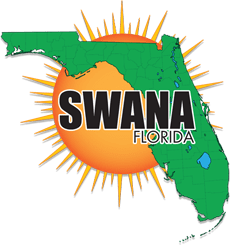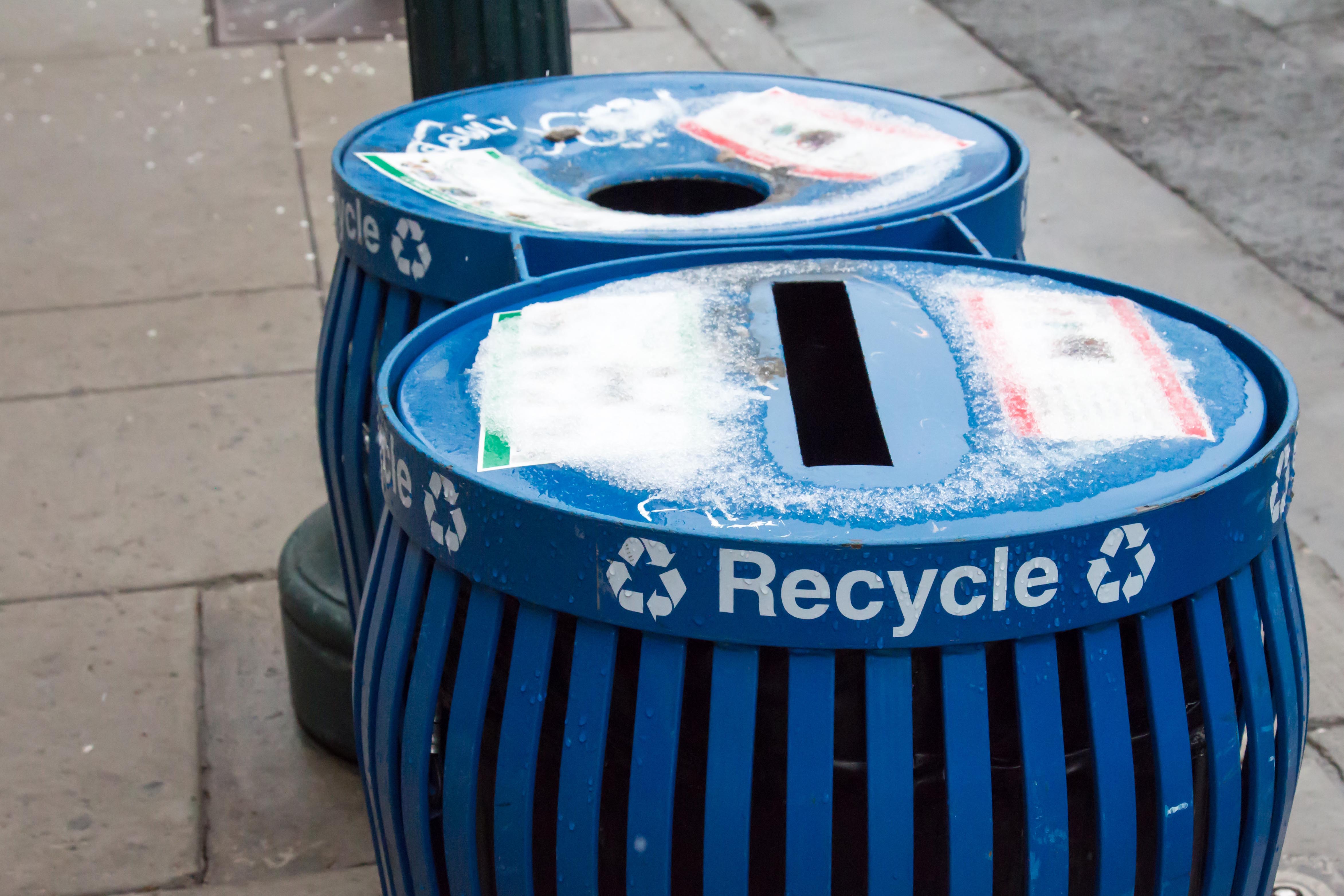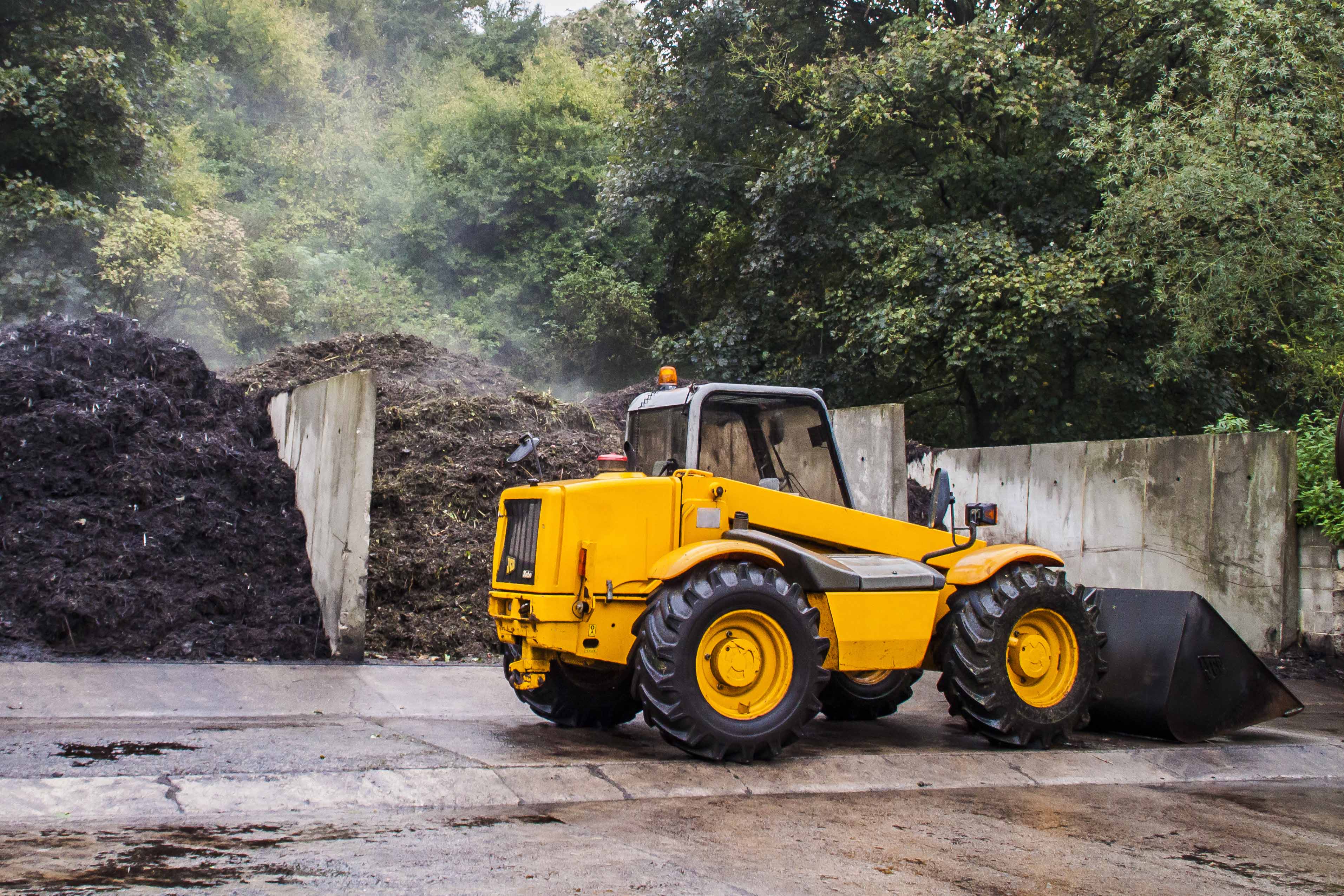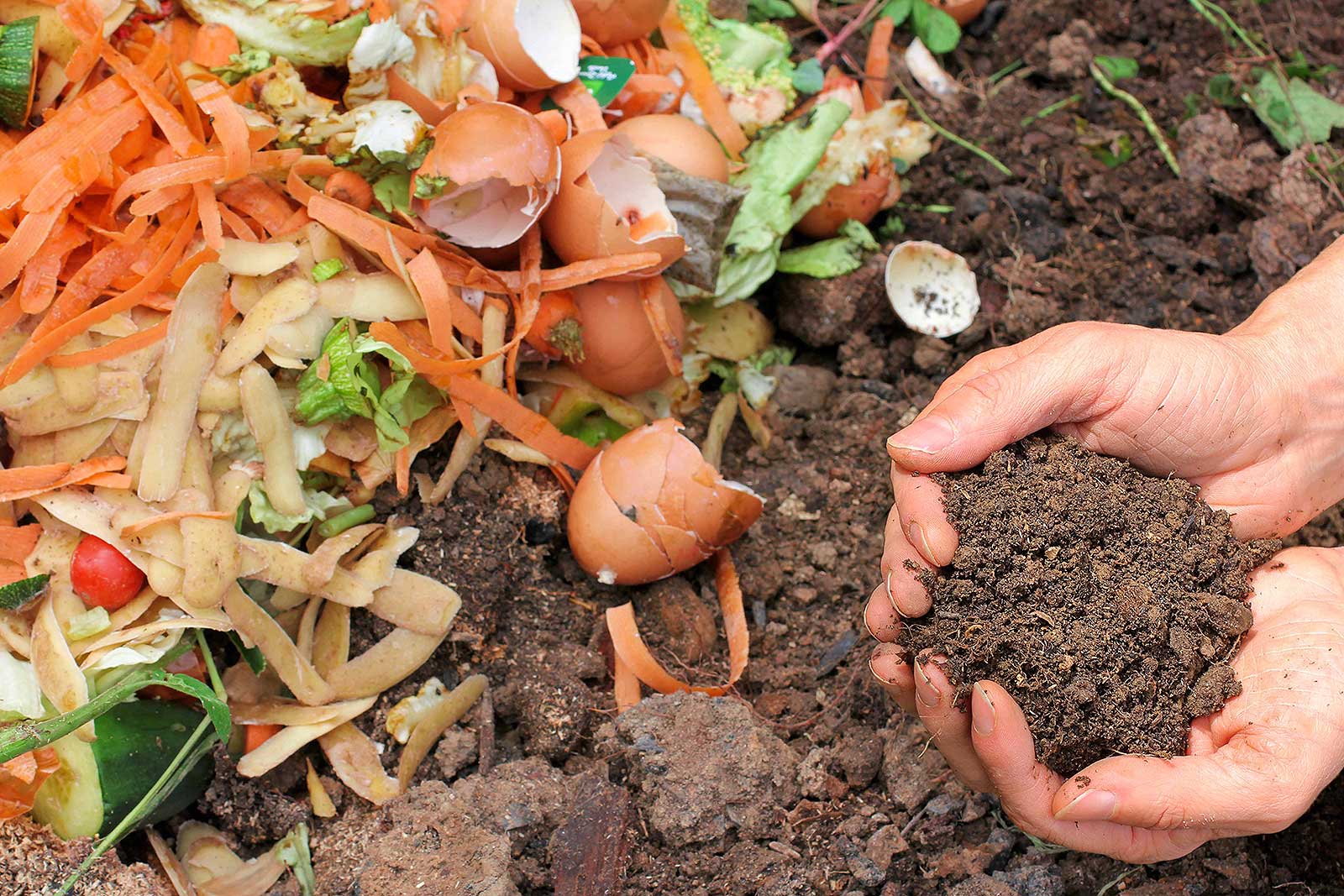
WasteExpo Composting & Organics Recycling Annual Conference, New Orleans, LA (May 8, 2017) Presenter: Laith Ezzet, Sr. Vice President
California recently implemented a mandatory commercial organics recycling law, AB 1826. The largest organics generators were required to implement organics recycling programs by April 1, 2016, with smaller generators being phased in over the next few years.
This presentation will identify the wide range of organics collection methods, processing technologies, and rate structures that have been planned or implemented by various waste haulers and public agencies throughout the State of California to comply with the new mandatory organics recycling law. These programs include:
- Bag-based collection programs where organics are separated into plastic bags and then co-collected with refuse and recovered at a MRF
- Source separated organics collection using carts and bins
- Recovery of organics through mixed waste processing at a material recovery facility
- Processing of organics at new anaerobic digestion facilities
- Processing of organics into a slurry for digestion at waste water treatment plants
- Composting of mixed organics, including food waste and green waste
Examples of rate structures include:
- Free organics recycling services with costs recovered through increased refuse rates.
- Reduced rates for organics collection at less than refuse rates.
- Organics collection offered at the same cost as refuse rates.
- Higher rates for organics collection above refuse rates that “stand on their own”.
The presentation will also include case studies of both successfully developed organics processing facilities, and unsuccessful facilities that were proposed but not developed due to political, permitting, or financial concerns.

SWANA Florida Chapter Winter Conference, Tampa Bay, FL (February 20, 2017) Presenters: Rob Hilton, Vice President, Lauren Barbieri, Project Manager
You’ve recently managed a successful RFP process, and selected your new solid waste service provider. So your job is done, and you can move on to the next project, right? Wrong!
The most commonly neglected and often poorly executed part of a franchising process comes in the final negotiation of the contract terms, implementation of the new services, and ongoing monitoring and management of the contract. This presentation will illustrate, using real world examples, how best to conclude the contracting process and start the new franchisee off on the right path. This includes: (1) How to structure your process to minimize the scope and schedule of negotiations while still allowing flexibility in the relationship with your new partner; (2) How to work with your service provider in the implementation and promotion of new services; (3) How to deal with contract issues that come up after you think you are done negotiating the contract; (4) How to work with service providers who are actively supporting your communities goals – and what to do with those who aren’t; and, (5) What you should include in your contract management tools during the design phase to equip you to manage a long-term partnership.

California — a longtime leader in green and sustainable building practices – developed the California Green Building Standards Code (CALGreen) in order to improve public health, safety and general welfare by enhancing the design and construction of buildings. In 2010, CALGreen became the nation’s first state-mandated green building code.[[1]] On January 1, 2017, the minimum diversion requirements for construction & demolition (C&D) waste will increase from 50% to 65% across the State of California.[[2]] Also expanding in 2017 is the number of waste generators required to separate and divert organic waste under California Assembly Bill 1826. AB 1826 will continue to expand and cover more businesses and multi-family customers through 2021 until the amount of organic waste being landfilled annually has been reduced by 50% (compared to 2014 disposal volumes). This represents an additional 6.35 million tons of organic waste needing to be separated, collected, processed, and recovered by programs and facilities and represents an expansion of 37% over 2014 volumes. Wood waste in the form of lumber is a large component of this material. It is the second-largest component of the waste stream based on the 2014 waste characterization study (2.1 million tons, 7 percent of the disposed waste stream).[[3]] Wood waste accounts for over 40% of C&D materials and recovering it is a critical part of reaching the new diversion threshold.[[4]]
Processed (chipped) wood is used as mulch, composting bulking agent, animal bedding, and fuel. Wood waste from construction or demolition is attractive as a fuel because of its low moisture content and because the non-uniform nature of the wood waste makes it less desirable to other wood waste processors. Unfortunately, the Biomass electric generating plants that convert renewable materials such as wood and other agricultural waste into energy are in danger of disappearing in California. In 2000, California had 39 operating biomass facilities generating 864 Megawatts (MW) of baseload electricity from 6.7 million tons of biomass each year. The majority of these plants were built in the 1980s and many are nearing the end of their planned lives. Between 2000 and 2016, approximately half of California’s plants either shut down or were idled, reducing this important source of energy by 322 MW. What is more concerning for waste management agencies is the loss of approximately 2.5 million tons of capacity. Seven more plants will be shutting down in 2017 due to antiquated or expiring contracts.[[5]] It will take approximately 500 of the latest generation of small gasfire plants producing 3 MW per year to replace the biomass plants being shut down.
The demise of biomass is the result of a high cost of production compared to alternative energy sources. Biomass currently costs around 85% more than PV Solar and, without Greenhouse Gas subsidies, Biomass facilities will continue to disappear. If we do not create alternative locations for this material, it will all be destined for use as alternative daily cover and/or landfilled.
[1] http://www.hcd.ca.gov/docs/calgreen/2016calgreenlegreport.pdf
[2] Characterization of Building-Related Construction And Demolition Debris In The United States, EPA 1998. http://infohouse.p2ric.org/ref/02/01095.pdf
[3] State of Recycling in California Updated 2016, CalRecycle 2016. http://www.calrecycle.ca.gov/Publications/Documents/1554/201601554.pdf
[4] Characterization of Building-Related Construction And Demolition Debris In The United States, EPA 1998. http://infohouse.p2ric.org/ref/02/01095.pdf
[5] http://ncrarecycles.org/2016/03/recycling-update-2016-speaker-presentation-videos/

California Resource Recycling Association Annual Conference and Trade Show, Sacramento, CA Presenters: Rob Hilton, Vice President; Tim Flanagan, General Manager, MRWMD
Starting in 2010, the Monterey Regional Waste Management District (MRWMD) realized the need to plan for the next generation of its recycling system. State legislation and regulatory agencies made clear a statewide 75% recycling goal. In 2014, the District’s debt from its 1996 MRF would be paid off and the MRF would require upgrades. In 2015, the franchise agreements in seven of its member communities would expire. The key to success was to work regionally to develop a unified vision while respecting the unique character and needs of each community. The MRWMD engaged HF&H to work with the District and member communities to define the goals and the methods for achieving them, including: 1) new infrastructure to support processing of all waste, recycling, organics, and C&D in the region; 2) recovery of energy and fuel products; 3) competitive procurement for franchise collection services; and, 4) a business model that aligns with a future consisting of less waste. This presentation describes the features of the new system that enable the achievement of the highest levels of material recovery seen anywhere in the U.S., while preserving the value of recyclable and organic commodities. It includes a description of the planning and franchise procurement process. In addition, the presentation identifies the state-of-the-industry infrastructure that will provide the backbone for the next twenty to thirty years of recovery programs. Since the new system was over a year old at the time of the conference, results of the new system are presented.

California Resource Recycling Association Trade Show and Conference, Sacramento, CA Presenters: Lauren Barbieri, Project Manager; Peter Deibler, Senior Manager; Tracy Swanborn, Senior Manager
Negotiating for Results” is a three-part presentation.
Designing Programs and Compensation for Zero Waste Communities
Whether you intend to negotiate with your current provider or issue an RFP, the first key to franchising success comes with the design of the programs, compensation structure, and the service specifications. The first part of the presentation uses real world case studies to illustrate best practices around the key program design and specification issues surrounding the process, including: 1) How to evaluate, analyze cost/benefit, and select programs that will support your zero waste objectives; 2) How to engage stakeholders and the public to get buy-in on programs; and, 3) How to structure compensation mechanisms and customer rates to fairly balance risk and reward between the contractor, local government, and ratepayers.
Designing RFPs and Franchises for Zero Waste Communities
Once your programs and compensation structure are planned and the community has bought in, you are ready to start drafting your RFP and contract. This portion of the presentation illustrates the best practices for how to draft your RFP and franchise, including: 1) how to craft documents to get the programs you want now as well as those you may want in the future; 2) how to design the RFP and franchise that attracts more competition; 3) how to structure the solicitation and pricing to support elected officials in a decision-making process that supports your zero waste goals; and, 4) how to structure the proposal evaluation and selection process to increase the likelihood that your franchisee will be a partner with the community in its zero waste goals, rather than just another vendor.
Negotiating and Implementing Franchises for Zero Waste Communities
Now that you’ve got the perfect RFP and franchise agreement and have selected your contractor(s), your job is done and you can move on to the next big project, right? Wrong! The most commonly neglected and often poorly-executed part of a franchising process comes in the final negotiation of the contract terms, implementation of the new services, and ongoing monitoring and management of the contract. This portion of the presentation focuses on how best to conclude the contracting process and start the new franchisee off on the right path. It also identifies contract management tools to equip you to manage a long-term partnership.

Learn from the Mistakes (and Successes) of Our California Counterparts Recycle Florida Today Annual Conference and Exhibition, St. Augustine, FL Speaker: Lauren Barbieri, Project Manager
The passing of House Bill 7135 in Florida in 2008, establishing Florida’s 75% Recycling Goal, has left many wondering how we will get there (or if we will get there at all). Questions such as, “How to structure rates for high diversion?” “How to quantify what is recycled?” and, “How to maximize effectiveness of facility infrastructure?” are weighty and complex issues, but issues that have been considered before.
In 1989, the State of California established a 50% diversion mandate by 2000, and has since established a statewide goal of 75% diversion by 2020. Sound familiar? Take heart, Florida, you are not alone in your quest for 75%!
HF&H Consultants has been working with local agencies in California to achieve regulatory compliance and drive diversion since 1989. Multiple California communities have already achieved 75% diversion, some identifying “zero waste” as their next target. This presentation identifies successes, and more importantly, the mistakes and pitfalls that agencies in California have made and experienced over the past 25+ years in the pursuit of higher diversion.

SWANA Road to Zero Waste National Conference, Las Vegas, NV Presenters: Rob Hilton, Vice President; Tim Flanagan, General Manager, MRWMD
This presentation demonstrates what long-term strategic planning, historically prudent financial management, utilization of existing infrastructure, beneficial timing, a dedicated appointed Board of Directors and some visionary staff leadership can bring about with a focus on creating a true “Zero Waste” facility. Starting in 2010, the Monterey Regional Waste Management District realized the need to plan for the next generation of its recycling system. State legislation and regulatory agencies made clear a statewide 75% recycling goal. In 2014, the District’s debt from its 1996 MRF would be paid off and the MRF would require upgrades. In 2015, the franchise agreements in seven of its member communities would expire. The key to success was to work regionally to develop a unified vision while respecting the unique character and needs of each community. The District engaged HF&H Consultants to work with the District and member communities to define the goals and the methods for achieving them, including: 1) new infrastructure to support processing of all waste, recycling, organics, and C&D in the region; 2) recovery of energy and fuel products; 3) competitive procurement for franchise collection services; and, 4) a business model that aligns with a future with less waste. The presentation describes the features of the new system that enable the achievement of the highest levels of material recovery seen anywhere in the U.S. while preserving the value of recyclable and organic commodity. It presents the planning and franchise procurement process and the state-of-the-industry infrastructure that will provide the backbone for the next twenty to thirty years of recovery programs.

SWANA Webinar Presenters: Bob Hilton, President; Peter Deibler, Senior Manager
As more cities, counties and states continue to drive diversion of discarded materials from landfills, many agencies are now faced with the new question of where to take the “good stuff”. Many agencies are recognizing a need to dramatically increase recyclables and organics processing capacity to meet community demands and local/state regulation. However, funding processing facility development, whether starting from scratch or simply improving existing infrastructure, is no small feat, and public agencies often seek to do so in partnership with private companies. This presentation tells the story, through case studies, of three separate approaches to funding materials processing facilities through public/private partnership, discusses the impacts of direct verses indirect public agency involvement in funding and facility development, and considers how aspects of the these two approaches may be combined to best serve your agency:
- Approaching Facility Development as a Project: The County of Santa Barbara and several cities within the county are currently negotiating the details of a private sector partnership to build a materials processing facility, composting facility and anaerobic digestion facility on land owned by the county, and funded through a non-recourse debt structure.
- Approaching Facility Development as a Service: The City of San Jose, CA indirectly drove development of the world-class materials recovery facility at Newby Island, and the ZWED Dry Fermentation Anaerobic Digestion Facility (located on City land) by requesting that the capacity for processing services be made available, without directly participating in facility design, construction, or funding.
- Hybrid Approach – Facility Development as a Project and a Service: The South Bayside Waste Management Authority, a joint powers authority made up of twelve municipalities in San Mateo County, initially drove development of the Shoreway Environmental Center by a private company, and then subsequently issued revenue bonds to acquire and significantly upgrade it themselves.

Joint Summit, Recycle Florida Today and SWANA Florida Sunrise Chapter, Orlando, FL Speakers: Rob Hilton, Vice President; Lauren Barbieri, Project Manager
Are you a local agency staff member planning new or modified zero waste programs for a pending waste services procurement or contract extension? Are you interested in making mid-contract program additions or other changes to enhance diversion? Incorporating effective high diversion programs into your existing waste management system can be more complex than many imagine. However, this presentation equips you with the tools to start the process in your own community, as well as offer suggestions for getting the best business deal for your new programs. This presentation helps you plan and execute a process to achieve the best results, drawing on the recent experiences of influential California cities such as San Jose, and Palo Alto (as well as many other jurisdictions), and a franchise training workshop HF&H designed for California’s Department of Resources Recycling and Recovery (CalRecycle) staff. This presentation is useful for agencies using or considering franchise systems, as well as those using other system frameworks.
The presentation addresses questions such as:
- What makes a zero waste or high diversion RFP different from other RFPs?
- What is the “death spiral” and how can I structure rates to avoid it?
- When in the process should I plan for stakeholder input?
- Why should I use an RFP in a sole source negotiation?
- How should I shape the RFP to get the programs I want now, as well as those I may want later?
- How can I best manage, and minimize financial and rate risk in a way that’s fair both to my jurisdiction and to the service provider?
- How can I best plan for program changes during the contract?
- How can I best create partnerships with service providers?

U.S. Compost Council Annual Conference, Jacksonville, FL Presenter: Rob Hilton, Vice President
Driving diversion of organic materials from landfills is a topic that has been discussed for years; however, developing programs to do so often presents a myriad of financial and operational challenges. With cities, counties and states across the nation embracing the need to increase organics diversion, along with the passing of new legislation in California (mandatory organics collection, and elimination of diversion credits for organics used as landfill cover), the need to develop sustainable organics collection and processing programs is more pressing than ever. The goal of this presentation is to demonstrate that this may be achieved through well-managed procurement processes. This presentation offers a closer look into what drives the economics of organics programs, and ultimately provides a roadmap for developing successful organics collection and processing contracts.
The presentation begins by laying out a broad list of planning factors that any agency developing an organics program should consider, along with a discussion of scoping options (e.g., what is the available or desired timeline? Will the contract include incentives or subsidies? Will there be a pilot area, or other form of phased implementation?). It then provides an overview of various procurement approaches (e.g., negotiate with existing service provider(s), “design-build-operate” a public facility, or a launch competitive RFP) and considers the process-related and economic factors (including pros/cons) of such options. The presentation discusses the importance, and provides examples, of various strategies for stakeholder outreach and education, both leading up to, and throughout the new contract. Finally, the presentation highlights some best practices for implementing and managing the new contract for ongoing success.
The presentation concludes with a look at how all of these factors have come into play in three distinct regions in California.










